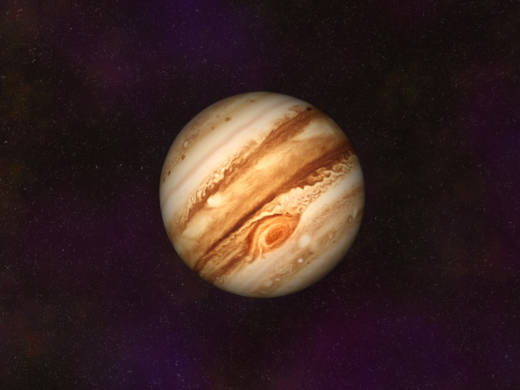“We were wrong about it,” he said via email.
Instead, they found an octagon-shaped grouping over the north pole, with eight cyclones surrounding one in the middle, and a pentagon-shaped batch over the south pole. Each cyclone measures several thousand miles across.
The fifth planet from our sun, gas giant Jupiter is by far the largest planet in our solar system. Launched in 2011, Juno has been orbiting Jupiter since 2016 and peering beneath the thick ammonia clouds. It’s only the second spacecraft to circle the planet; Galileo did it from 1995 to 2003.
Another of the studies in this week’s journal Nature finds that Jupiter’s crisscrossing east-west jet streams actually penetrate thousands of miles beneath the visible cloud tops. Refined measurements of Jupiter’s uneven gravity field enabled the Weizmann Institute of Science’s Yohai Kaspi in Rehovot, Israel, and his colleagues to calculate the depth of the jet streams at about 3,000 kilometers, or 1,865 miles.
“The result is a surprise because this indicates that the atmosphere of Jupiter is massive and extends much deeper than we previously expected,” Kaspi said in an email.
By better understanding these strong jet streams and the gravity field, Kaspi said scientists can better decipher the core of Jupiter. A similar situation may be occurring at other big gas planets like Saturn, where the atmosphere could be even deeper than Jupiter’s, he said.
Jonathan Fortney of the University of California, Santa Cruz, who was not involved in the research, called the findings “extremely robust” and said they show “high-precision measurements of a planet’s gravitational field can be used to answer questions of deep planetary dynamics.”
Using similar techniques, Juno could help scientists determine the depth of Jupiter’s Great Red Spot, a colossal swirling storm, Fortney said in a companion article in the journal.
NASA’s Jet Propulsion Laboratory researchers Glenn Orton and Fachreddin Tabataba-Vakili, who both took part in the cyclone study, said all these new discoveries “show Jupiter from a new perspective” unseen before Juno.
“We cannot say how many mysteries are left to uncover,” they wrote in an email. “We are already finding way more fascinating results than we ever expected!”
